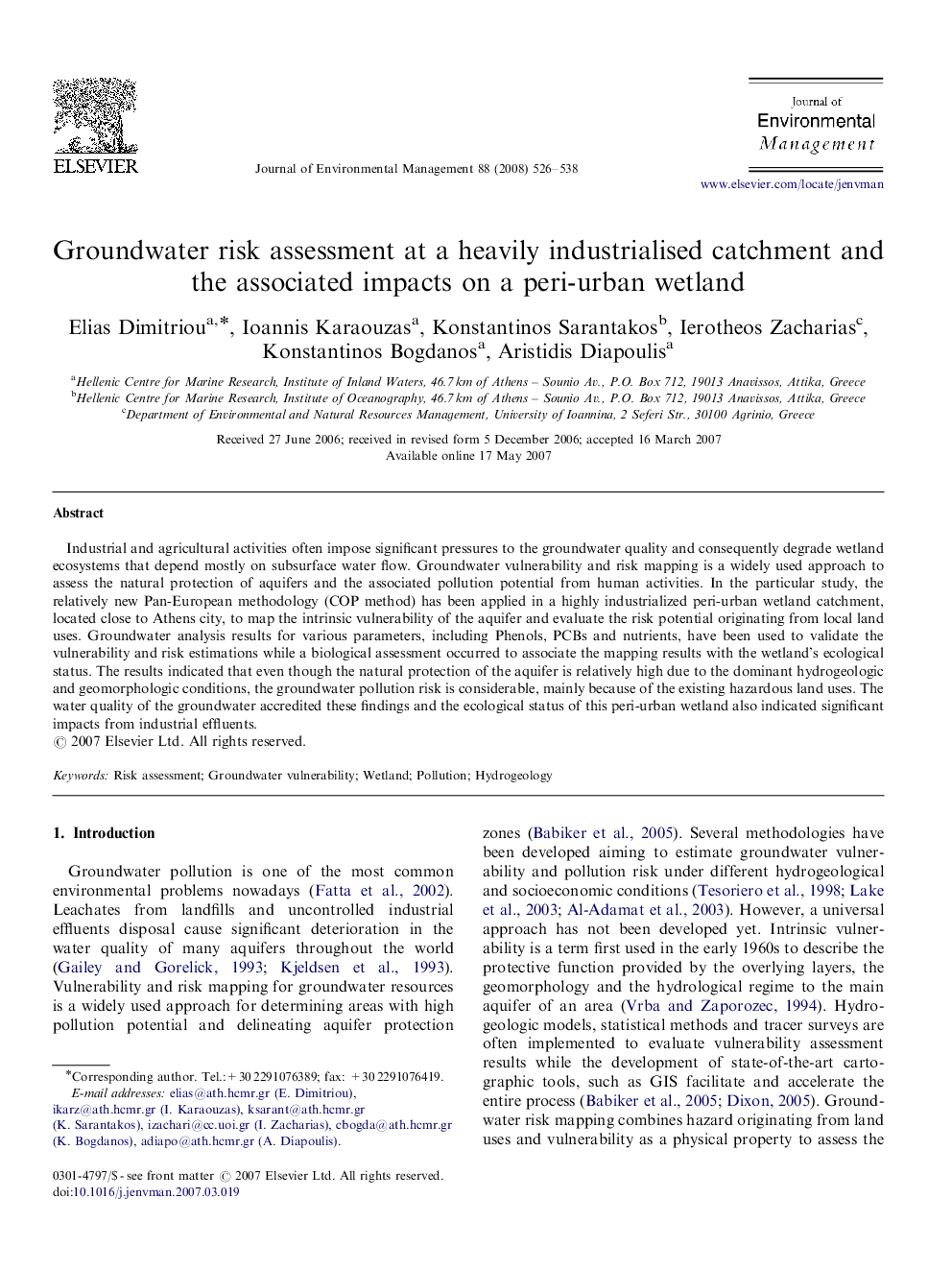| Article ID | Journal | Published Year | Pages | File Type |
|---|---|---|---|---|
| 1058631 | Journal of Environmental Management | 2008 | 13 Pages |
Industrial and agricultural activities often impose significant pressures to the groundwater quality and consequently degrade wetland ecosystems that depend mostly on subsurface water flow. Groundwater vulnerability and risk mapping is a widely used approach to assess the natural protection of aquifers and the associated pollution potential from human activities. In the particular study, the relatively new Pan-European methodology (COP method) has been applied in a highly industrialized peri-urban wetland catchment, located close to Athens city, to map the intrinsic vulnerability of the aquifer and evaluate the risk potential originating from local land uses. Groundwater analysis results for various parameters, including Phenols, PCBs and nutrients, have been used to validate the vulnerability and risk estimations while a biological assessment occurred to associate the mapping results with the wetland's ecological status. The results indicated that even though the natural protection of the aquifer is relatively high due to the dominant hydrogeologic and geomorphologic conditions, the groundwater pollution risk is considerable, mainly because of the existing hazardous land uses. The water quality of the groundwater accredited these findings and the ecological status of this peri-urban wetland also indicated significant impacts from industrial effluents.
